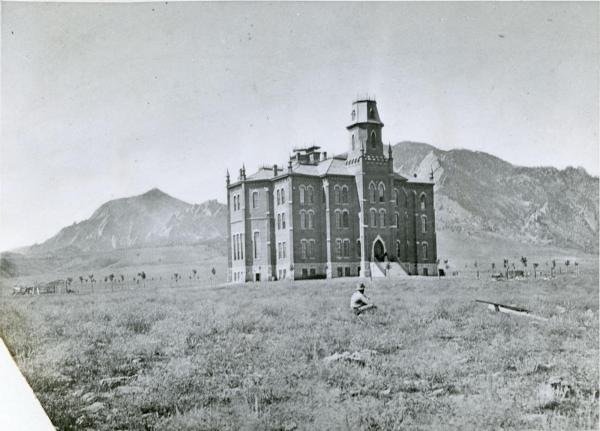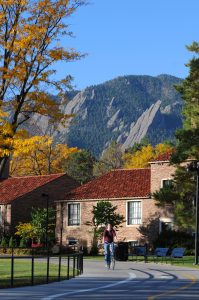Campus Colors
14 Sep 2020
CU wasn’t always graced with the vibrant hues it displays in autumn.
By Dell Bleekman
In high contrast to the lush campus of today, the University of Colorado Boulder began with nary a tree in sight. When it was founded in 1876, CU was on a vast, sweeping plain. Now, it’s one of the top spots in the county to ooh and ahh at the fall colors, thanks to a monumental effort by early staff and students. They transplanted trees from the Boulder Creek flood plain and purchased native species from local nurseries. To add more brilliant autumn colors, the university also imported trees from the Midwest and the East Coast.


Over the years, campus trees have been plagued by a variety of pests and diseases, including Dutch elm disease, which killed more than 1,000 American elms on campus in the ’60s and ’70s.
Today, CU Boulder’s lead arborist Vince Aquino and his team care for more than 5,000 trees. The tally includes more than 100 different species, 14 of which are native to Colorado. According to Best College Reviews, the school ranks No. 5 on its list of the “50 Most Beautiful Campuses in Autumn,” and the university has received the Arbor Day Foundation Tree Campus USA® recognition several years running.

Varieties of ash, mainly the white ash, are popular with leaf-peepers. “It’s one of the trees we get the most questions about on campus,” Aquino says, “because they turn a bronze-purple, blended with red, orange and gold.” The green ash, by contrast, turns brilliant yellow in fall. While these stately trees are under attack from the emerald ash borer, a non-native beetle, they can be treated with trunk injections.
Where to Find Them: There’s no shortage of ash varieties on campus. Start by the stand of trees just north of Varsity Pond, then head southeast to Norlin Quad. End up west of Ketchum Arts and Sciences Building at a small open space called Hawthorn Court.
Just east of Norlin Quad is another of Aquino’s favorite spaces on campus. “Hawthorn Court might be overlooked on campus, but there are hawthorn trees in the courtyard that provide a nice fall color display,” he says. Indeed, there are several varieties of this native Colorado tree in the courtyard, many bearing colorful pieces of fruit even in the dormant season.
Next, head west to Hellems Lawn, the sprawling open space just north of Hellems Arts and Science Building. Hellems Lawn is another delightful green space on campus. Perhaps best known as a meeting and picnic place for the Colorado Shakespeare Festival, it’s also home to a variety of maples that provide reliable, brilliant colors each fall.
“For the last several years, we’ve been experimenting with new sugar maple varieties,” Aquino says. Those varieties are ‘John Pair’ (a rounded tree with vibrant green summer foliage and bright fall color) and ‘Caddo’ (sturdy hardwoods that grow to about 30 feet with beautiful round canopies). Aquino says both maples provide excellent fall displays, so throw on that fleece and get out—you won’t be disappointed!
For more brilliant autumn colors around the state, check out our Fall Leaf Peeping Guide.












